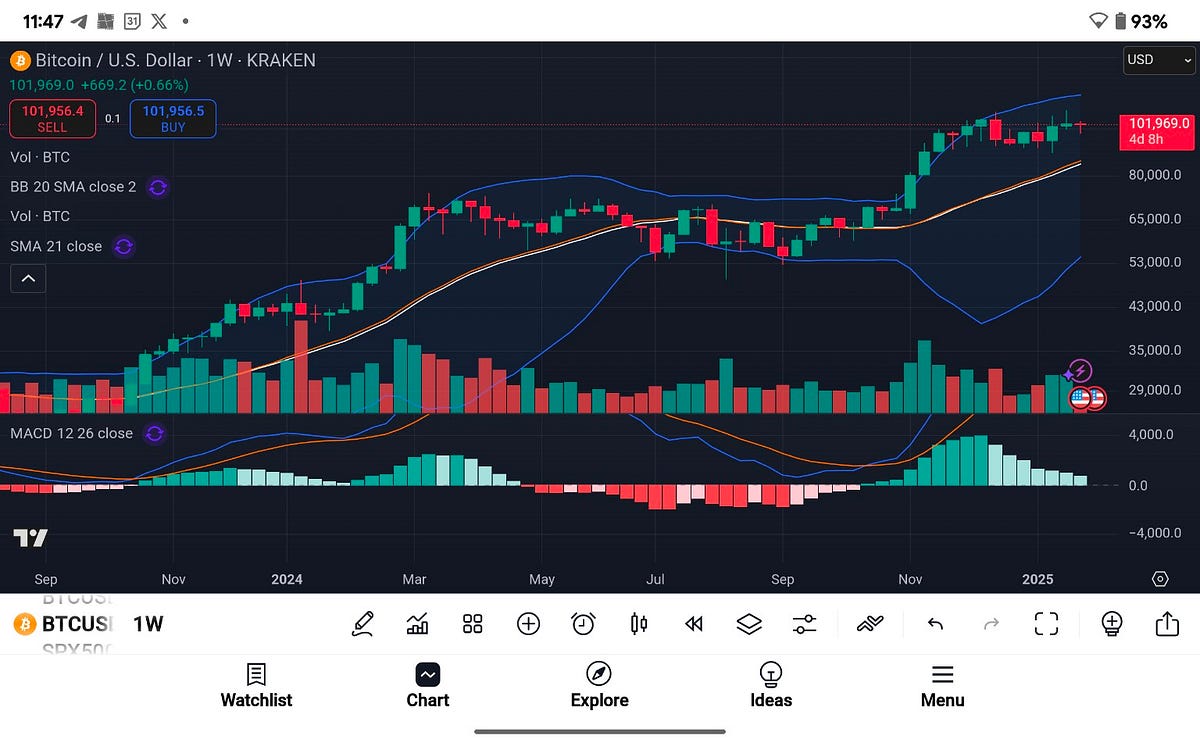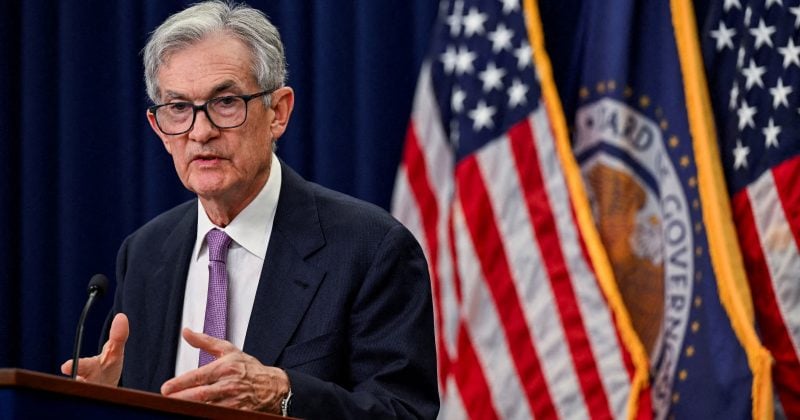Cornering the Market: Why It Usually Ends in Tears — But Might Just Work for MicroStrategy — Who Dares, Win!

Cornering the market is the financial equivalent of betting on the farm. It’s a high-stakes game of domination, where history’s players have hoarded tulips, silver, or stocks, only to discover that markets are, inconveniently, unpredictable beasts. And yet, MicroStrategy (MSTR), with its audacious Bitcoin play, dares to ask: “What if this time, it actually works?”
Led by the unflappable Michael Saylor, MicroStrategy is rewriting the rulebook by embracing Bitcoin’s immutable scarcity. While past attempts to corner markets collapsed under the weight of elastic supply, government intervention, or plain old hubris, Bitcoin’s unique properties make this strategy not just plausible but perhaps inevitable. Let’s revisit history’s greatest cornering disasters, their cautionary tales, and why MicroStrategy might just pull it off.
Market Cornering: A Spectacle of Ambition and Miscalculation
Cornering the market sounds brilliant on paper: control supply, hike prices, and rake in profits. But history tells a different story — one of regulatory smackdowns, unforeseen market forces, and grand dreams turned financial rubble. Before we delve into why Bitcoin changes the game, let’s look at ten infamous attempts to corner markets and why they failed so spectacularly.
1. Tulip Mania (1630s): The Bubble That Bloomed and Burst
The Plan: Dutch traders hoarded rare tulip bulbs, creating an artificial scarcity that sent prices soaring. At its peak, one bulb could buy you a canal-side mansion.
The Fall: Demand dried up faster than a winter tulip, and prices collapsed overnight. Fortunes were wiped out, leaving traders holding worthless flowers.
Lesson: Hype fades, but regrets last forever. Without true scarcity or intrinsic value, bubbles are destined to burst.
Why MicroStrategy Is Different: Bitcoin isn’t just rare; it’s mathematically scarce. No amount of frenzied planting will yield more than 21 million coins.
2. The Hunt Brothers and Silver (1970s-1980): Too Heavy to Handle
The Plan: The Hunt brothers tried to hoard half the world’s silver supply, driving prices from $6 to $50 per ounce.
The Fall: Governments tightened regulations, mining increased, and margin calls broke the Hunt brothers faster than you can say “liquidation.”
Lesson: Elastic supply snaps back. Commodities like silver can always be mined, recycled, or regulated into submission.
Why MicroStrategy Is Different: Bitcoin’s supply isn’t elastic — it’s hardcoded. You can’t mine extra blocks because demand spikes.
3. Vanderbilt’s Railroad Rumble (1860s): Shares on a Collision Course
The Plan: Cornelius Vanderbilt secretly acquired Harlem Railroad shares to dominate the rail industry.
The Fall: Rivals issued fake shares, creating chaos. While Vanderbilt eventually won, the ordeal nearly bankrupted him.
Lesson: Monopoly invites mutiny. Efforts to corner markets provoke resistance from competitors.
Why MicroStrategy Is Different: Bitcoin’s decentralized network means no rival can issue “fake coins.” Its authenticity is guaranteed by code.
4. Jay Gould’s Golden Gambit (1869): A Black Friday Fiasco
The Plan: Jay Gould and James Fisk hoarded U.S. gold and convinced the government to halt sales, creating a price surge.
The Fall: On “Black Friday,” the government flooded the market with gold, causing prices to plummet and speculators to go bankrupt.
Lesson: Centralized power wields a big stick. Governments can crush speculative plays with a single policy move.
Why MicroStrategy Is Different: Bitcoin isn’t subject to government supply manipulation. Its decentralized nature is immune to interventionist policies.
5. Yasuo Hamanaka’s Copper Catastrophe (1990s): Mr. Copper’s Meltdown
The Plan: Yasuo Hamanaka hoarded global copper supplies for a decade, aiming to control prices.
The Fall: When exposed, Sumitomo Corporation faced $2.6 billion in losses, and Hamanaka earned the nickname “Mr. Copper” for all the wrong reasons.
Lesson: Secrets aren’t sustainable. Long-term manipulation crumbles under scrutiny.
Why MicroStrategy Is Different: MicroStrategy’s strategy isn’t a secret — it’s a transparent masterclass in accumulating Bitcoin within the rules.
6. Salomon Brothers’ Treasury Blunder (1991): A Bond Too Far
The Plan: Salomon Brothers illegally cornered U.S. Treasury bond auctions to dominate the market.
The Fall: Regulatory crackdowns led to massive fines and reputational fallout.
Lesson: Breaking rules breaks you. Illegal tactics inevitably backfire.
Why MicroStrategy Is Different: MicroStrategy’s play is fully above board. It’s not bending rules; it’s leveraging Bitcoin’s natural scarcity.
7. Amaranth Advisors’ Natural Gas Nightmare (2006): Burned by the Burners
The Plan: The hedge fund took massive natural gas positions, effectively controlling futures markets.
The Fall: Market reversals led to $6 billion in losses and the fund’s collapse.
Lesson: Volatility punishes overconfidence. Over-leveraged bets can lead to ruin.
Why MicroStrategy Is Different: MicroStrategy owns Bitcoin outright. No leverage, no margin calls, and no heart-stopping reversals.
8. The London Whale’s CDS Disaster (2012): A Whale Out of Water
The Plan: JPMorgan’s “London Whale” took oversized credit default swap positions, aiming to dominate the market.
The Fall: Market shifts led to $6 billion in losses and dented JPMorgan’s reputation.
Lesson: Big bets don’t always pay. Market shifts can devastate concentrated positions.
Why MicroStrategy Is Different: Bitcoin’s global adoption trajectory is inevitable, not subject to the whims of counterparties.
9. Nickel’s Short Squeeze (2022): A Metallic Mayhem
The Plan: A Chinese firm shorted nickel heavily, but a price spike caused massive losses.
The Fall: The London Metal Exchange controversially canceled trades, angering participants.
Lesson: Manipulation breeds chaos. Markets retaliate when they sense a squeeze.
Why MicroStrategy Is Different: Bitcoin’s decentralized network ensures no centralized exchange can rewrite history or cancel trades.
10. GameStop and Reddit (2021): When Memes Met Markets
The Plan: Retail traders coordinated to trigger a short squeeze on GameStop, sending its price soaring.
The Fall: Prices eventually normalized, and late buyers were left holding the bag.
Lesson: Crowdsourced hype fades fast. Momentum alone doesn’t create sustainability.
Why MicroStrategy Is Different: Bitcoin’s value isn’t driven by memes but by institutional adoption and intrinsic scarcity.
Why MicroStrategy’s Strategy Works
Where others failed, MicroStrategy thrives by sidestepping the traps of market cornering:
- Bitcoin’s Hard Supply Cap: No tulip gardens, silver mines, or government vaults can inflate Bitcoin’s supply.
- Decentralized Network: No entity can override its ledger or manipulate its rules.
- Transparent Strategy: MicroStrategy’s play isn’t secretive — it’s a clear bet on Bitcoin’s future.
A Multi-Trillion-Dollar Vision
If Bitcoin hits $1 million per coin, MicroStrategy’s holdings of 331,200 Bitcoins would be worth $331 billion. But why stop there? With the potential for accumulating 1 million Bitcoins, MicroStrategy could command over $1 trillion in assets — rivaling Apple and Microsoft.
This isn’t just corporate strategy; it’s financial alchemy, leveraging Bitcoin’s scarcity to create generational wealth.
Closing Thoughts: The Future Belongs to the Bold
MicroStrategy isn’t just cornering a market — it’s staking a claim on the future. By embracing Bitcoin’s principles of scarcity and decentralization, the company isn’t playing a game — it’s changing the rules. For anyone watching, this isn’t just a financial revolution — it’s history in the making.
Cornering the Market: Why It Usually Ends in Tears — But Might Just Work for MicroStrategy — Who… was originally published in The Capital on Medium, where people are continuing the conversation by highlighting and responding to this story.

 2 months ago
49
2 months ago
49









 English (US) ·
English (US) ·